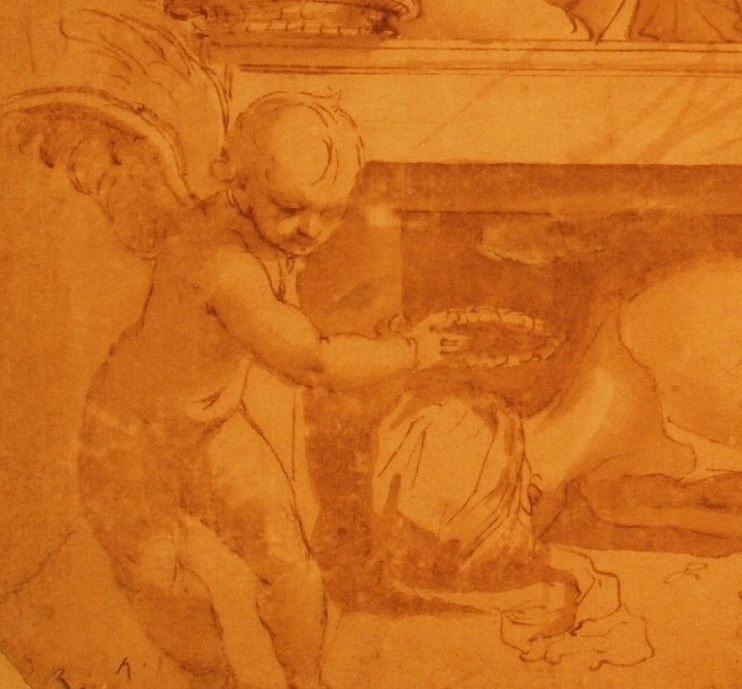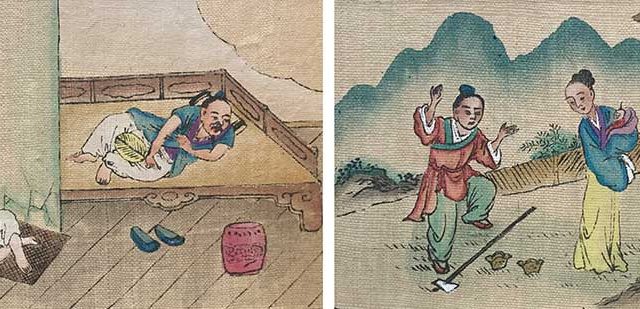Very few works by the Italian artist Stefano Maderno (1576-1636) survive and his fame rests primarily on the sculpture of Saint Cecilia in the church of Santa Cecilia in Rome, made when he was 23.
The sculpture was commissioned by Paolo Emilio Sfondrati (1560-1618) who opened the sarcophagus of Saint Cecilia. Through the inscription beneath, Sfondrati explains that the sculpture is an exact representation of what he saw when the tomb was opened:
“I, Paolo, cardinal at Santa Cecilia, offer you the image of Saint Cecilia, who I saw with my eyes intact in her tomb. I have represented her in that exact position in the marble in front of you”.
Cecilia lived in the 2nd or 3rd century A.D. and belonged to a noble Roman family. She was forced to marry Valeriano, a pagan man. According to medieval sources, during her marriage, while the music was playing, she would sing in her heart to God. For this reason, she is the patron saint of musicians. St. Cecilia has been depicted by many artists in the attitude of playing instruments. The V&A has several examples of the subject, including a choirbook illumination (museum no. 4145) and a print after Peter Paul Rubens‘ (1577-1640) ‘St. Cecilia’ in Berlin (Staaliche Museen) (museum no. DYCE. 2266).
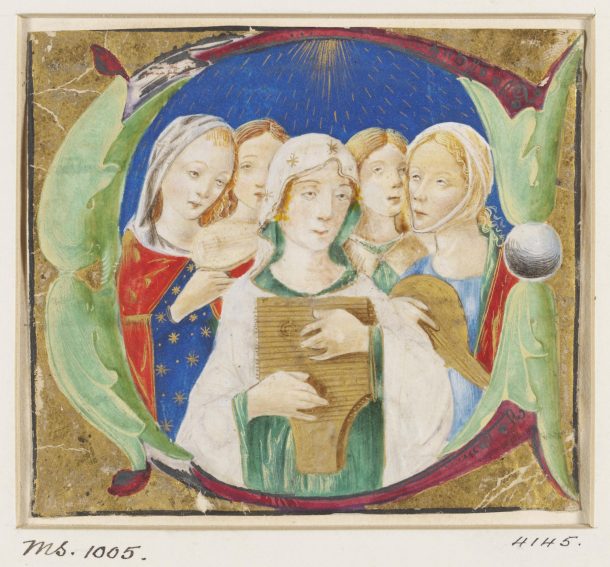
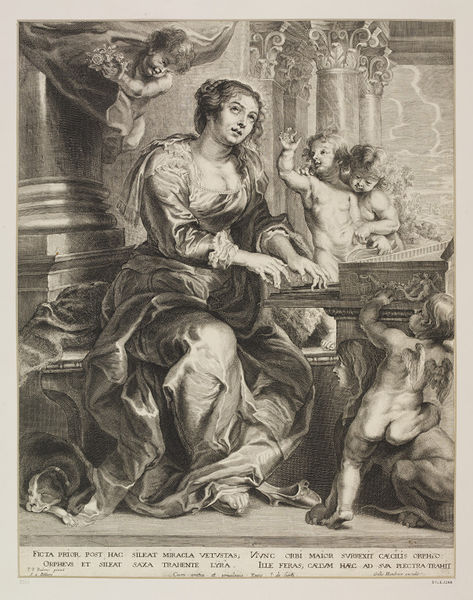
St. Cecilia is sometimes shown rejecting musical instruments, as in the famous painting by Raphael (1483-1520) in Bologna (Pinacoteca Nazionale), reproduced by many printmakers such as Marcantonio Raimondi (c. 1480 – c. 1534) (museum no. DYCE.1025).
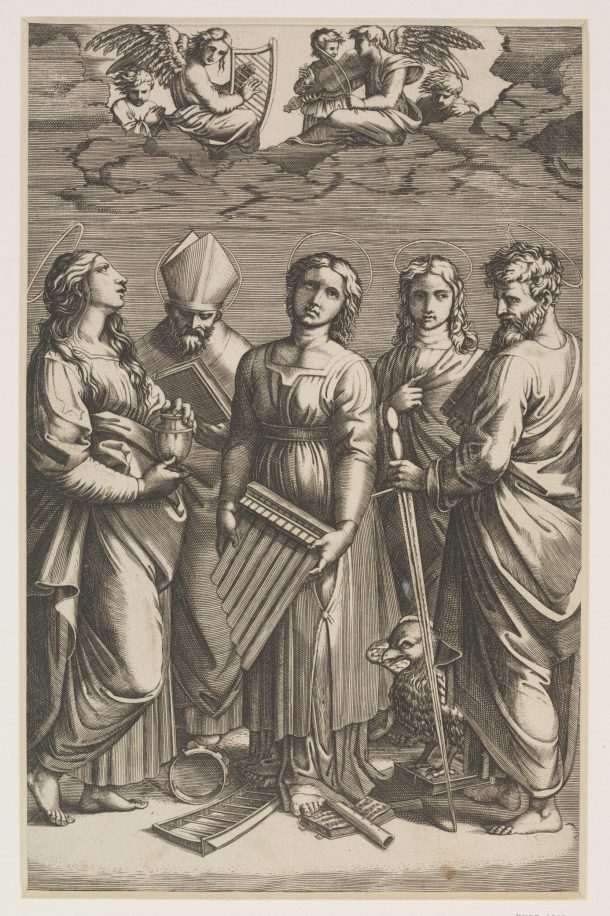
The masterpiece by Raphael was the source of inspiration for the artist Julia Margaret Cameron (1815-1879), who reinterpreted it as a photograph, datable to around 1864/5 (museum no. 45155).
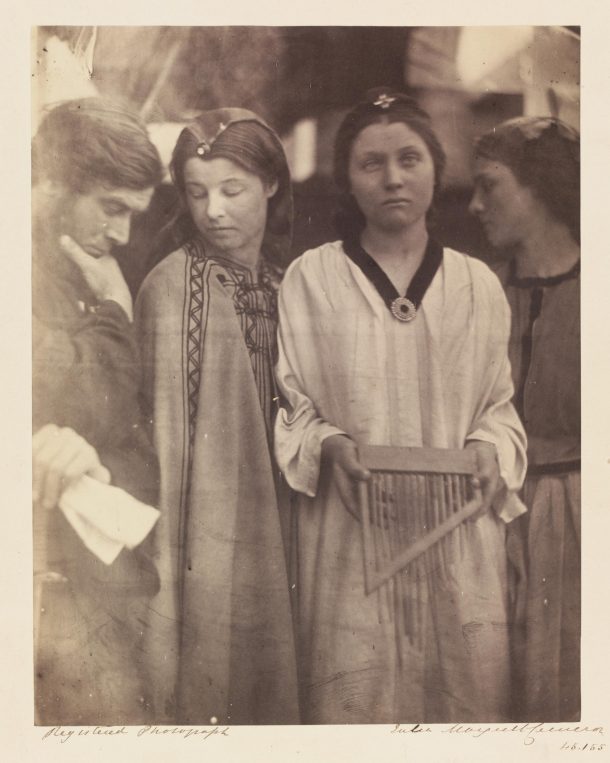
The V&A has another important example of this subject, painted by Paul Delaroche in 1836 (museum no. 553-1903).
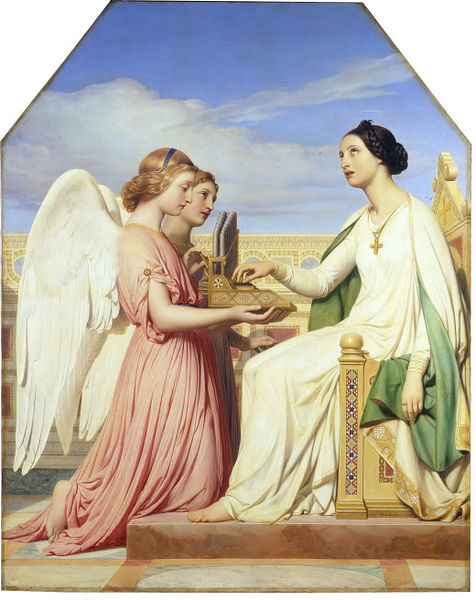
The Saint is said to have been beheaded with a sword and the print after Domenichino (1581-1648) portrays the moment just before her death (museum no. DYCE.1668).
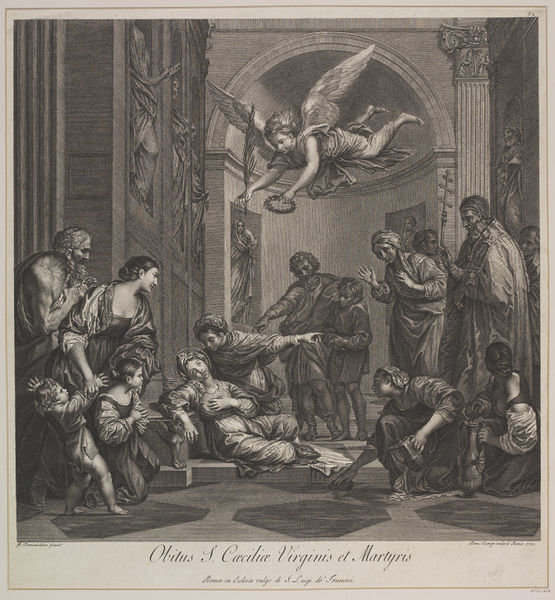
This is the reason why she is sometimes presented with the palm of the martyrdom.
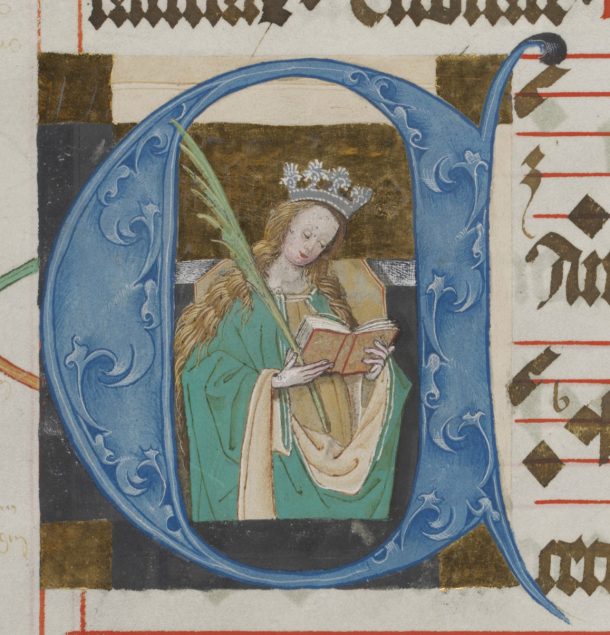
Saint Cecilia’s intact body was found on October 20th, 1599 under the altar of the Roman church dedicated to her. From that moment, the people of Rome wanted to see the relic and the streets in Trastevere were overrun with pilgrims, forcing the church to close several times.
Ancient sources tell that a month later, on November 22nd, the high mass for Saint Cecilia’s burial took place, and towards the end of the celebration, Pope Clemens VIII started crying, moved by the beauty of the Saint’s body. This theatrical and highly sentimental approach to religion, heightened by the closing and subsequent re-opening of the church to the public, was typical of the Baroque period.
Less than a year later, the image of the Saint in her sarcophagus was immortalized by Stefano Maderno, and the statue was put under the high altar of the church, where it remains today.
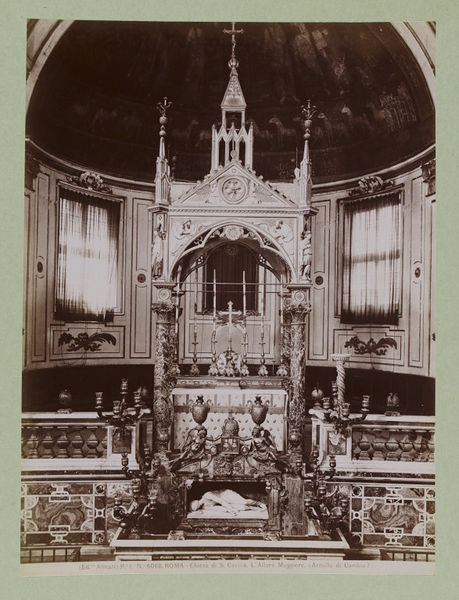
Scholars have now proven that Saint Cecilia’s body was not found intact. This may explain why Maderno did not show the Saint in the traditional horizontal pose but instead depicted her on her side, draped with cloth.
Nonetheless, the great success of Maderno’s marble sculpture stimulated the cult of Saint Cecilia and the statue became the source for other works, such as the painting by by Ventura Salimbeni (1567/1568-1613) recently sold at Christie’s.
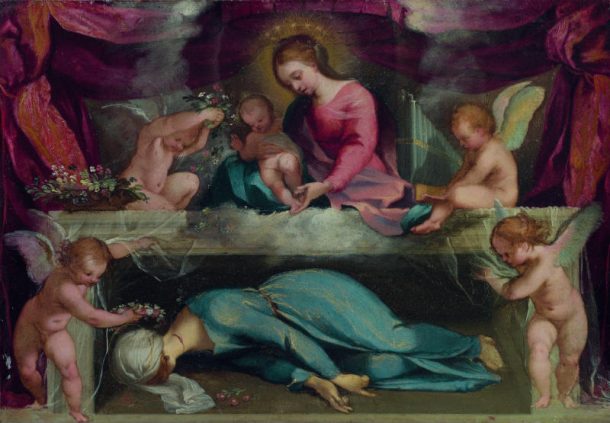
The V&A holds a preparatory drawing for the painting, showing ‘St. Cecilia in her tomb, attended by the Virgin and Child and angels’ (museum no. E.1088-1920).
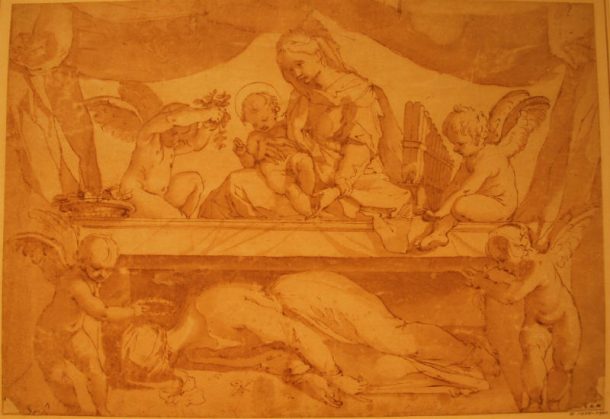
The beautiful and refined drawing, previously in the collection of the Marquess of Lansdowne, was acquired by the Museum in 1920 and attributed to the Sienese painter Salimbeni by Peter Ward-Jackson in his catalogue of ‘Italian Drawings’ in the V&A. The pen and ink and wash drawing corresponds closely with the final composition, while another one at the Louvre shows slight differences, especially in the upper right angel’s pose and must be an earlier study for the painting.
Salimbeni combines the themes of the music, with which Saint Cecilia is associated, with the story of the discovery of her body. In fact, in portraying Saint Cecilia, he copied Maderno’s sculpture. Salimbeni shows the Virgin and the infant Christ paying homage to her body, while two angels offer her some flowers and one plays music.
